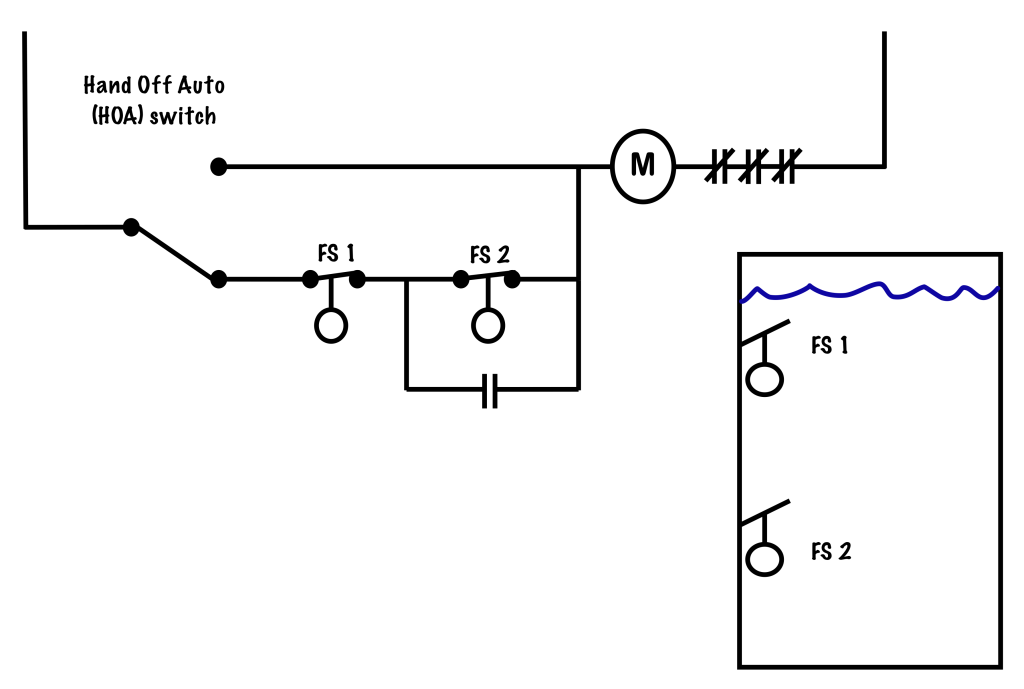30

A three-position selector switch is again used to provide either manual or automatic control. When the selector switch is moved to the AUTO position, the magnetic starter is controlled by the opening or closing of the float switch contacts, similarly to the sump-pump circuit previously discussed.
The key change is in the nature of the switches contacts. For a tank-fill circuit, our float switches will have their contacts wired normally closed. This means that both switches will close at a low liquid level and open at a high level. Also note that auxiliary motor contact is now in parallel with FS 2 or the low-level switch. This ensures that the motor starts pumping liquid into the tank when it’s nearly empty and doesn’t stop until the high-level switch is opened.
Again, with two pilot devices, our circuit has a greater range of sensitivity than it would with only a single float switch.
https://media.bccampus.ca/id/0_v9fm3y7t?width=608&height=402&playerId=23449753
A device for making or breaking the connection in an electric circuit.
Contacts on a magnetic starter that are not Horsepower rated. Can come as either normally-open or normally-closed and can be used as maintaining contacts, electrical interlocks or control for pilot lights.
In electrical terms, refers to a connection where current has more than one path to flow.
Loads connected in parallel will experience the same potential difference (voltage), but may draw different values of current depending upon their individual resistance.
An auxilary device that provides indication or control of a process to an operator. Pilot devices include automatic switches such as float and pressure switches, as well as indicating lights.
